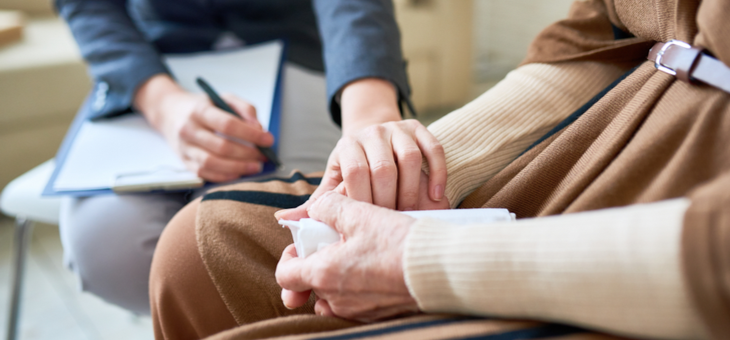Recently, I attended an Emotional Freedom Technique (EFT) workshop as part of my research into alternative pain-relief methods, in the wake of codeine-based medication no longer being available without a prescription.
More than just a therapy for pain relief, I discovered EFT could be used for many physical and psychological ailments.
What I witnessed, as EFT practitioner Russell Cunningham ‘treated’ one of the workshop participants, was mysterious and astounding.
It felt like I was watching a gentle exorcism in which a woman troubled by horrific nightmares was able to shake off her anxiety and laugh about it. For the purposes of this article, we will call her Jane.
Since her best friend literally collapsed dead in front of her one night, Jane had experienced horrific nightmares in which the incident played over and over every time she went to sleep. It left her with a very high level of anxiety that could not be eased by any type of therapy … until she discovered EFT.
As I and others watched on, Jane’s anxiety, which she had described as about nine out of 10 in intensity, melted away until she declared with amusement that she had zero anxiety. This was achieved in less than 15 minutes with EFT.
I checked in a few weeks after the workshop and was told that more than a month later, that one session had eliminated the nightmares, leaving Jane anxiety-free and able to get on with her life. I asked Mr Cunningham to explain.
YourLifeChoices: At first blush, EFT sounds like it’s too good to be true. What exactly is it?
Russell Cunningham: “Emotional Freedom Technique, or tapping, was established by American Gary Craig in the 1990s. It is an effective, drug-free way to eliminate stress and its associated pain – both emotional and physical – and to ease the symptoms of many resulting conditions.
“I have great success bringing relief to people with head, back and neck pain. Now that opioid painkillers are no longer available over the counter, EFT is more relevant than ever.
“While EFT is not a replacement for appropriate medical care, when nothing else seems to work, it could be useful. And best of all, once you learn the technique, you use it on yourself – anywhere you are and without the need for props.
“Essentially, EFT uses elements of cognitive and exposure therapy in combination with light acupressure. It involves fingertip tapping on between nine and 17 acupuncture points while repeating a series of affirmations.
“Firstly, you identify a feeling or sensation, for instance, a sore shoulder or a feeling of anxiety. Then you determine its intensity from a range of zero to 10. You start tapping the first acupressure point for a couple of seconds while using an affirmation.
“From there, you move to the other eight points in sequence. Once you have completed a rotation, the intensity of the pain should be less and you can keep repeating the sequence until it reaches zero.
“At 17, I was hit by a car and, at 24, I broke my neck in a motorbike accident. I spent years seeing chiropractors, osteopaths and physiotherapists. But it was only when I began practising EFT that I found proper relief.
“Coupled with changes in diet, EFT has also been known to boost the auto-immune system to alleviate some of the symptoms of diabetes and rheumatoid arthritis, for example. The therapy won’t make these diseases disappear, but it can help to reduce their effects.
“EFT can also address addictions, such as food cravings, to help with weight loss, to reduce dependence on alcohol and cigarettes, lower high blood pressure, eliminate phobias and generalised anxiety.
“People use it to deal with bereavement and sleeping disorders.
“I am not saying that you should stop taking prescribed medications, but by trying EFT, and after consulting doctors, some people will find they do not need to rely on powerful drugs as much.
“Emotional or psychological stress often presents as a physical ailment. Most people today are walking around with a big stress-load and because they don’t know any other way of being, they think it is normal. But it’s not.
“When we are stressed, our cortisol levels rise and this interferes with our ability to think clearly, with our immune system’s ability to fight disease, with the efficiency of our digestive system, and it can cause tension in our muscles which leads to pain in our neck, back and the rest of our body.
“Unless we learn to de-stress, we are constantly in emergency mode and this is not the way our bodies were meant to function.
“There are now over 100 published scientific papers validating the effectiveness of EFT.
“One of the most dramatic EFT success stories was a program early last decade to teach the technique to the orphaned survivors of the 1994 Rwandan genocide. A documented reduction in post-traumatic stress disorder of 90 per cent was achieved among the survivors, who were by then young adults.”
The Australian Institute of Self-Development’s Russell Cunningham is an internationally certified master of EFT. He has been practising the therapy on clients since 2003 and estimates he has delivered 18,000 sessions to close to 4000 people. As an EFT Master Trainer of Trainers, he has conducted more than 270 training sessions, teaching others to assist themselves or start a career as an EFT practitioner.
Have you practised EFT or some other alternative medical therapy to ease your ailments? If so, how successful was it.
Related articles:
Healing power of honey
Remedies for bloating
Are home therapies safe?
Health disclaimer: This article contains general information about health issues and is not advice. For health advice, consult your medical practitioner.

